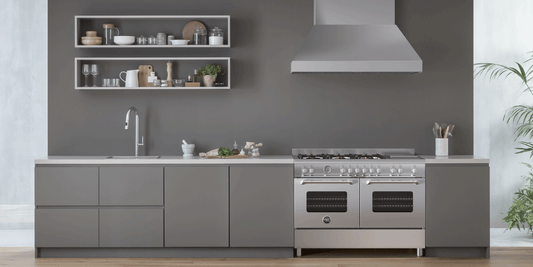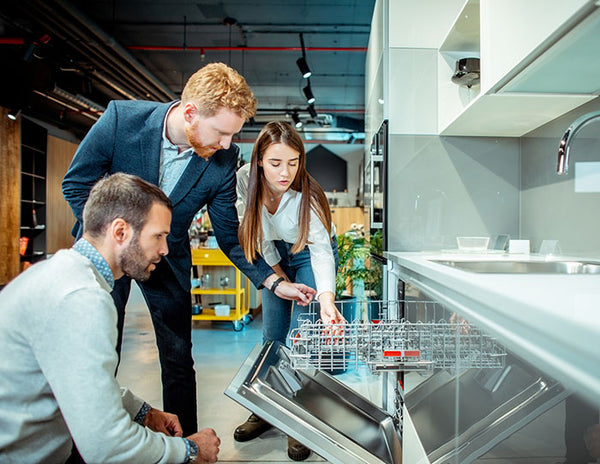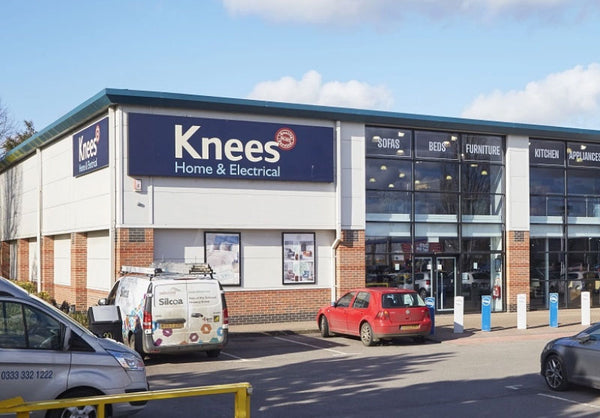How to choose the best cooker for your home
Cooker Buyers Guide
Choosing a new cooker is a big decision considering how often it is used in most households. It can also be a major investment, making it vital to make the right choice for you, your household, and your budget. But, with so many options available, where should you start? Let’s take a look at some of the decisions you need to make when choosing your next cooker.
Oven or cooker?
People often interchange the words cooker and oven but drawing the distinction is important when buying a cooker to ensure that you end up with the appliance you actually require! So, to distinguish the difference between an oven and a cooker:- Oven: This is the appliance that is used for baking and roasting. This can be installed and bought separately from a hob.
- Cooker: This is an all-in-one freestanding unit that features a hob and at least one oven. Your cooker will stand on your floor and, in almost all cases, will slot into a gap between units in your kitchen.
What fuel type?
There are three different fuel types available when it comes to finding the best cooker: dual fuel, electric, and gas. Many people will simply swap like-for-like and stick with the fuel supply already in the kitchen but, if you are thinking of making a complete change, here is the lowdown on the different fuel choices.- Electric cookers: Electric cookers can provide fast cooking times and even cooking results. They can also offer ease of cleaning but can be more expensive to run than their gas counterparts.
- Gas cookers: Cheap running costs and immediate hob heat control are the benefits of this type of cooker. They are also chosen by traditionalists who appreciate the moisture infusion and variable temperature that gas ovens can offer.
- Dual fuel cookers: These offer what many people believe are the best features of both types of fuel; the even cooking and temperature control of an electric oven combined with the instantly adjustable heat provided by gas hobs.
Cooker size
Cookers range in size with options for all types of kitchens, even compact spaces. In smaller areas, they offer a great way of keeping your cooking areas together. The standard size of a cooker is 60cm deep and 90cm tall but there are a range of widths available. Standard cookers will typically be between 55cm and 60cm wide.
Where you want to position your cooker may well influence the cooker size you choose and it’s important to consider the hot zone when planning your kitchen layout. This is the area around your cooker that must be kept clear to maintain safety. You must ensure that there are no flammable items or electric sockets in what is known as the ‘splashback’ area, which is right above where your cooker will be positioned.
Cooking capacity
Something else to think about is the oven cooking capacity you would like. This depends on the space you have and on personal choice, but most families will need a main oven with a capacity of at least 60 litres in order to offer the flexibility and practicality required. Standard cookers with single ovens typically have a 50 to 65 litre capacity, while those with a grill or second oven have a capacity of 30 to 35 litres.
Cookers also usually feature two small and two large hob plates or rings. Range cookers, meanwhile, are usually 90cm to 110cm wide and normally have two ovens, each with a capacity of around 60 litres. There are some models with single ovens with 100-litre capacities. On the hob of range cookers, you will typically find between five and ten different sized rings or plates, suitable for a range of pan sizes. You may also find a griddle included.
Cooker hob type
The hob type you choose for your cooker is very much a personal preference. If you choose an electric hob, the choices are:- Sealed plate hob: These have raised black plates and are usually included with lower cost cookers.
- Ceramic hob: Mid-range cookers will typically have these flat hobs, which offer faster heating. These shouldn’t be used with aluminium or copper-based pans.
- Induction hob: These are the quickest to reach temperature and offer better temperature control and features. They are also a slightly more energy-efficient choice and should be used with cast iron or stainless steel pans.
The key benefits of induction and ceramic hobs are that they look sleek and stylish in contemporary kitchens and are easy to keep clean.
Gas hobs, meanwhile, offer instant heat and easy control. They can also be used with any type of pan. Gas is also typically cheaper than electricity if fuel cost is something you’d like to consider. The downside of gas hobs is that they can be much harder to clean and offer variable heat depending on where you position your pan.
Budget
Your budget will influence which cooker you choose, with considerations including the fact that dual fuel cookers typically cost around £100 more than equivalent gas or electric entry-level models. You should typically expect to spend anywhere from £100 to £2000 on your new cooker. Here at Knees we have an extensive range to suit all budgets.
Cleaning
Easy cleaning is a priority for most of us, whether you are looking at Belling, Neff, Bosch, Rangemaster or any other brand. The least you might require when buying a cooker is having an easy-clean enamel that makes cleaning away grease a simple job. However, there are even more advanced choices to consider aswell. These include:- Catalytic linings : These absorb grease and burn it off when you cook at high temperatures.
- Pyrolytic functions : These are typically only available on high-end cookers and are programmes that burn away grease. All that is left is ash that you can easily brush away.
Key features
You will need to think about whether you want intelligent features such as the following:Meat thermometers offering real-time temperature information to ensure accurate and thorough cooking;
Electronic controls, many of which are touch-sensitive and therefore simplify cleaning the cooker;
Multi-function ovens that offer control over different parts of the oven and other features such as warming and defrost settings.
- Another area to consider is whether you want a separate grill cavity and if you would prefer a simple version or a variable grill that allows you to accurately control the temperature.
- Timers are a further consideration, with a range of possible options.
If you require any expert advice, please don’t hesitate to contact our friendly team here at Knees; we are more than happy to help.



